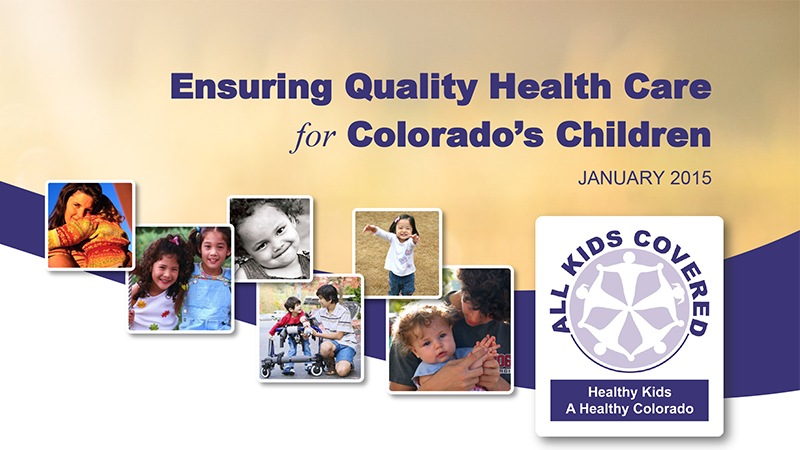Ensuring Quality Health Care for Colorado’s Children

By Aubrey Hill
For the last nine years, Colorado’s All Kids Covered Coalition has worked tirelessly to reduce the number of uninsured children in Colorado. In 2013, Colorado reached a historic low in its rate of uninsured kids: seven percent. We are so proud of our state’s progress, but we recognize that there is still work to do to reach our goal of covering every child. We care about coverage because it provides financial security and increases access to health care, so kids can grow up healthy and strong.
However, we also care about the kind of health care our children receive. We believe every child should have access to high-quality health care. All Kids Covered released a new report based on an analysis of data from the National Survey of Children’s Health, which is one of several standards for measuring health care quality. This survey defines “high-quality health care” with three criteria:
- Having adequate insurance
- Receiving comprehensive, coordinated, culturally competent, continuous care in a medical home
- Receiving regular preventive care
When these criteria are applied to Colorado, the results reveal that three in five Colorado kids, or 60 percent, are not receiving high-quality health care.
This composite measure gives us a sense of how our kids are faring overall in the health care system, and when we look at the individual criteria, we learn even more. Fourteen percent of Colorado kids do not have continuous coverage. One in six are not getting yearly medical check-ups and one in five are not getting yearly dental check-ups. Colorado is above average in ensuring that every child has a medical home, but still only about half of the state’s kids have a medical home. Clearly, we could do better for our kids.
The data also reveal that children of specific demographic groups tend to be more vulnerable to receiving lower quality health care. More vulnerable groups include:
- Children of color, especially if they live in households where little or no English is spoken
- Children 6-17 years old
- Boys
- Children living in households with low incomes and low levels of adult education
- Uninsured children or those experiencing gaps in coverage
More importantly, these data are complex and interconnected, and the effects are even more profound when children experience multiple factors that contribute to their vulnerability. For example, we know that children of color are more likely to live in poverty, live in households with lower educational attainment, and live where there is limited access to care. It is important to note that while the health care system itself needs improvement, our attention should also focus on the factors outside of the system that impact families’ ability to get their needs met. Unless we take a comprehensive approach, we will continue to perpetuate poor access and poor health outcomes for many of our kids.
The 2015 Colorado Health Report Card was recently released, and it further underscores the need and opportunity for Colorado to do more for the health of our children. We have only earned a ‘C’ grade compared to other states. While average grades don’t indicate failure, they do mean there is a lot of room for improvement. With extra attention to how our children are able to access quality health care, as well as a commitment to addressing the factors that affect that access, we can achieve a healthier future for our state and our children.
Learn more in the new All Kids Covered report, Ensuring Quality Health Care for Colorado’s Children.